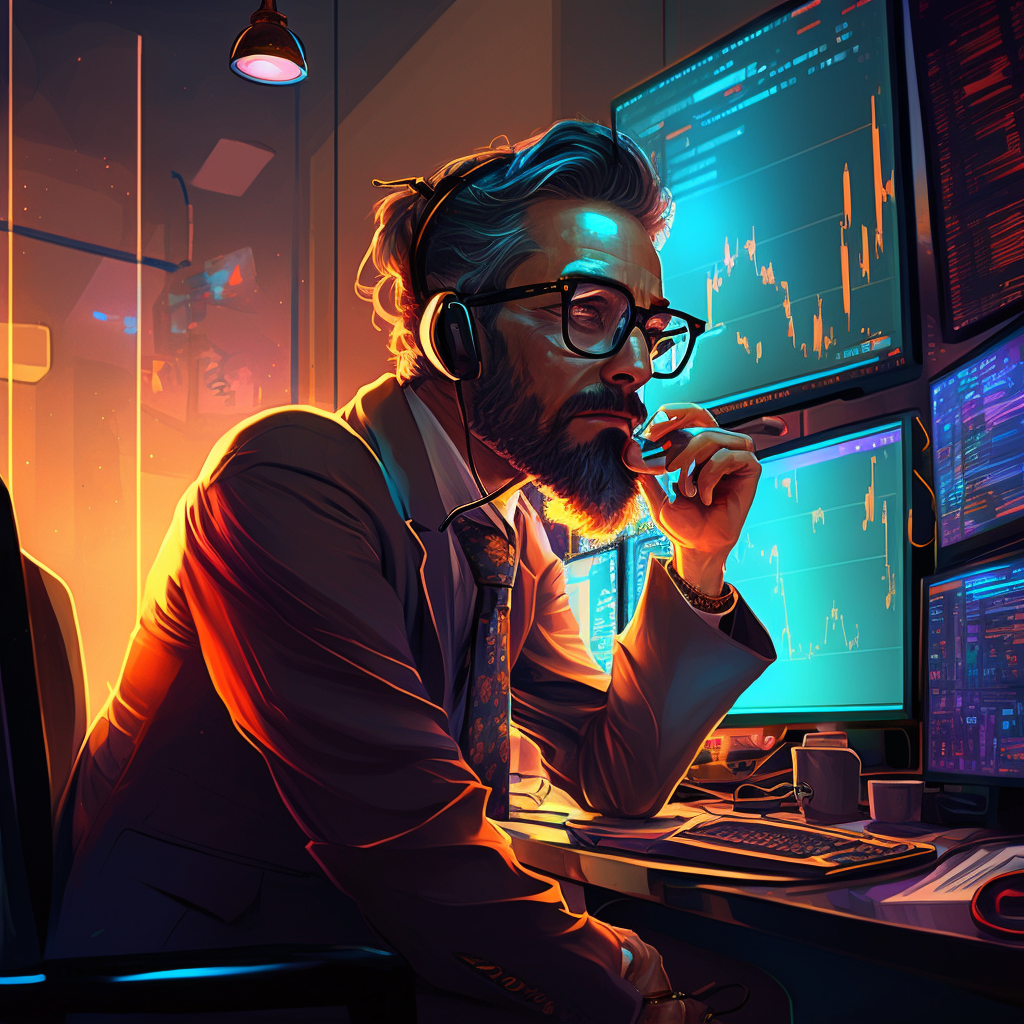Over the past few years, Non-Fungible Tokens (NFTs) have rapidly gained popularity in the world of art, music, sports, and beyond. NFTs are unique digital assets that are verified on a blockchain network, making them scarce and valuable. They have opened up new opportunities for creators, collectors, and investors, revolutionizing the way we think about ownership and authenticity in the digital world.

As we look to the future, the potential for NFTs seems limitless. In this article, we will explore some of the most exciting predictions for the future of NFTs in 2024 and beyond. From the growth of the metaverse and virtual real estate to the use of NFTs in gaming and sports, we will examine how these digital assets will continue to shape the future of our economy, culture, and society.
As NFTs continue to gain mainstream recognition and adoption, we can expect to see new use cases and opportunities emerge, transforming the way we interact with digital content and each other. This article will provide a glimpse into the possibilities of what the future may hold for NFTs and the impact they may have on our world.
The Metaverse: The Future of Virtual Real Estate
See also: Will the extraordinary rise of NFTs continue in 2022? (dezeen.com)
As NFTs continue to grow in popularity, many experts predict that the metaverse will be the next big thing in the digital world. The metaverse is a virtual world that exists in cyberspace, where people can create, interact, and transact in a fully immersive environment. It is a combination of virtual and augmented reality, creating a space where users can explore, socialize, and do business.
One of the most significant opportunities for NFTs in the metaverse is virtual real estate. Just as physical land is a valuable asset in the real world, virtual land in the metaverse can also hold significant value. With NFTs, users can purchase, sell, and trade virtual land and buildings, creating a new market for digital real estate.
We can expect to see new virtual cities and communities emerge in the metaverse, as people create their own digital spaces and environments. Businesses may also set up virtual storefronts, allowing them to reach customers from all over the world. NFTs can be used to verify ownership of virtual real estate, ensuring that buyers are purchasing a unique and authentic asset.
As the metaverse grows in popularity, the potential for NFTs in virtual real estate will only continue to increase. We may see a shift in the way we think about ownership and investment in the digital world, creating new opportunities for creators and investors alike. The metaverse and NFTs have the potential to revolutionize the way we interact with the digital world, creating a new frontier for innovation and creativity.
NFTs in Gaming: Unlocking New Possibilities
See also: How NFTs Create Value (hbr.org)
Gaming has always been a popular pastime, with millions of people playing video games every day. With the rise of NFTs, gaming has the potential to unlock a whole new world of possibilities. NFTs can be used to create unique in-game items and assets that players can purchase, sell, and trade.
This means that players can truly own their in-game assets and use them in a way that is not possible in traditional gaming. For example, players can sell their rare in-game items to other players, creating a secondary market for these assets. This opens up new opportunities for players to earn money while playing games, creating a new industry for gamers and game developers alike.
In addition to in-game items, NFTs can also be used to verify ownership of digital game assets such as game characters, game levels, and more. This means that players can truly own their game assets and use them in different games or even sell them to other players.
We can expect to see an increasing number of games incorporating NFTs into their gameplay, creating new opportunities for players to interact with the game world and each other. This also means that developers can create new revenue streams by selling NFTs in their games, which can be used to fund game development and create a sustainable business model.
As the gaming industry continues to grow, the potential for NFTs in gaming will only increase, unlocking new possibilities for gamers, developers, and investors alike. NFTs in gaming have the potential to create a new era of gaming, where players truly own their assets and have a real impact on the game world.
NFTs in Sports: Changing the Game
NFTs are not just limited to the world of art and gaming, but also have the potential to transform the world of sports. With NFTs, sports fans can own unique digital assets such as player cards, game-worn equipment, and even game moments such as a winning goal or a slam dunk.
These assets can hold significant value, especially for avid sports fans who are willing to pay for unique and authentic memorabilia. NFTs can be used to verify the ownership and authenticity of these assets, creating a new market for sports collectibles in the digital world.
NFTs can also be used to create new revenue streams for sports teams and athletes. For example, a sports team can sell NFTs of game highlights or other exclusive content to fans, creating a new stream of income. Athletes can also sell their own NFTs, allowing fans to own a piece of their legacy and accomplishments.
Furthermore, NFTs can be used to verify ownership and transfer of digital rights, such as broadcasting rights, sponsorships, and merchandising. This can create a new level of transparency and accountability in the sports industry, which has been plagued by controversies related to ownership and licensing rights.
As NFTs continue to gain popularity, we can expect to see more sports teams and athletes embracing this technology to create new opportunities for themselves and their fans. NFTs in sports have the potential to transform the way we think about sports collectibles, ownership, and even the way we watch and interact with sports.
NFTs in Charity: Making a Positive Impact
NFTs can also be used for charitable purposes, providing a new way for individuals and organizations to raise funds and make a positive impact on the world. With NFTs, individuals can create unique digital art or other assets and donate the proceeds from their sales to charity.
In addition, charities and non-profit organizations can create their own NFTs and sell them to supporters, creating a new way for people to contribute to causes they care about. The transparency and traceability of NFTs can also create a new level of accountability for these organizations, ensuring that the funds raised are being used for their intended purposes.
NFTs can also be used to create unique digital experiences for donors, such as virtual meet-and-greets with celebrities or access to exclusive content. This can create new opportunities for charities to engage with their supporters and create a lasting impact.
Furthermore, NFTs can also be used to create digital art pieces that raise awareness for social and environmental causes, creating a new platform for artists to express their social and political views.
As the world becomes more digitally connected, the potential for NFTs in the charity sector will only continue to grow. NFTs have the potential to create a new paradigm for charitable giving, where individuals can use their creativity and digital assets to make a positive impact on the world.
Challenges and Potential Solutions for NFTs
As NFTs continue to gain popularity, there are several challenges that need to be addressed to ensure their long-term viability and sustainability. One of the biggest challenges is the environmental impact of NFTs, which are created using blockchain technology and require a significant amount of energy to produce.
The energy consumption required to create NFTs has led to criticism of the technology, with some arguing that it is not sustainable in the long term. However, there are potential solutions to address this challenge, such as using more energy-efficient blockchains or offsetting the energy use through renewable energy credits.
Another challenge is the potential for fraud and scams in the NFT market. With the lack of regulation and standardization in the NFT market, there is a risk that buyers may be misled or deceived into purchasing fake or misrepresented NFTs. This can lead to a loss of trust in the technology and a decrease in its popularity.
To address this challenge, there are initiatives underway to create standards and best practices for the NFT market, such as the Non-Fungible Alliance (NFA) and the World Economic Forum’s Global Future Council on Cryptocurrencies. These initiatives aim to establish guidelines for the creation, sale, and verification of NFTs, creating a more transparent and trustworthy market.
Finally, there is a challenge of accessibility and inclusivity in the NFT market. Currently, the high costs associated with creating and purchasing NFTs may limit their accessibility to a smaller, wealthier audience. To ensure that NFTs are accessible to a wider audience, there are initiatives underway to create more affordable and accessible NFT marketplaces.
As NFTs continue to evolve and mature, it is important to address these challenges to ensure their long-term viability and impact. With innovative solutions and collaborative efforts, NFTs have the potential to create a new paradigm for ownership, creativity, and innovation in the digital age.
Conclusion: The Future of NFTs
See also: Experts believe NFTs have a future beyond the art world | World Economic Forum (weforum.org)
In conclusion, NFTs represent a significant evolution in the way we think about ownership, creativity, and value in the digital age. As a decentralized and transparent technology, NFTs have the potential to transform a wide range of industries, from art and gaming to sports and charity.
While there are certainly challenges and concerns that need to be addressed, the possibilities for NFTs are truly endless. As we look to the future, we can expect to see continued innovation and growth in the NFT market, as more individuals and organizations embrace this technology and explore its potential.
Ultimately, the success of NFTs will depend on our ability to balance innovation with responsibility, ensuring that we are creating a sustainable and equitable market for all. As we navigate this new landscape, we must remain open-minded, adaptable, and collaborative, working together to unlock the full potential of NFTs and create a brighter future for all.

